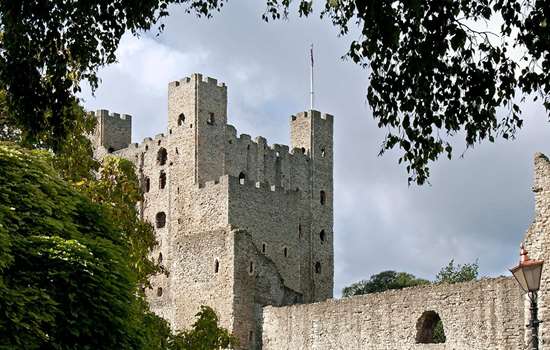Search Results
35 results for canterbury cathedral
Page
Past Lives: Henry II, Becket and Dover Castle
How the consequences of Thomas Becket’s murder in Canterbury Cathedral 850 years ago may have influenced Henry II in creating Dover Castle’s Great Tower
Page
Thomas Becket, Henry II and Dover Castle
On 29 December 1170 Archbishop Thomas Becket of Canterbury was murdered in his cathedral by four of Henry II’s knights. Ten years later, Henry II embarked on a massive rebuilding of Dover Castle. How were his actions, and Becket’s murder, connected?
Page
Discover English Heritage sites as part of a pilgrimage. Explore our routes created in collaboration with the British Pilgrimage Trust.
Page
History of St Augustine’s Abbey
St Augustine’s Abbey was one of the most important monasteries in medieval England, established as the result of the papal mission to bring Christianity to England.
Page
A Canterbury Tale: The Bayeux Tapestry and St Augustine’s Abbey
St Augustine's Abbey in Canterbury has long been celebrated for its contribution to English Christianity. But the latest historical research suggests that it may also have been the birthplace of one of history's most famous artefacts.
Page
Speaking with Shadows: Series 1 Episode 5
Speaking with Shadows is the podcast that listens to the people that history forgot. Join Josie Long as she visits Pevensey Castle to hear the story of Queen Joan of Navarre who was accused of witchcraft and imprisoned there by her stepson, King Henry V.
Page
Archbishop of York between 1114 and his death in 1140, Thurstan was one of the most significant churchmen of early 12th-century England. New research from English Heritage has revealed that he was also venerated as a saint.
Page
Significance of Harmondsworth Barn
The significance of the barn lies in its scale, condition, oddities of construction, and the abundance of documentary material relating to its construction, use and ownership.
Page
William the Conqueror imposed a total reorganisation of the English Church. He had secured the Pope’s blessing for his invasion by promising to reform the ‘irregularities’ of the Anglo-Saxon Church, which had developed its own distinctive customs. Throughout the medieval period the Church was a pervasive force in people’s lives.
